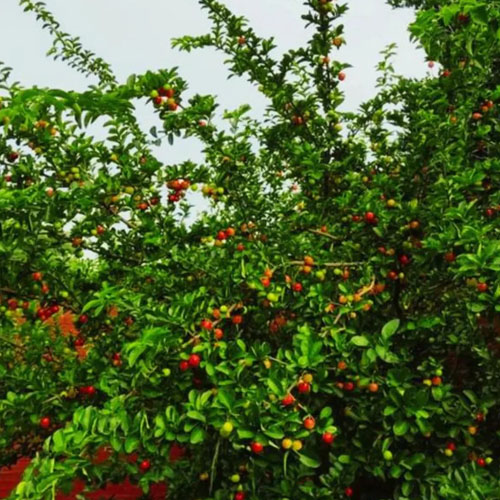Cherry Plants
Cherry (Prunus avium for sweet cherries and Prunus cerasus for sour cherries) is a deciduous fruit tree known for its delicious, juicy fruits. Cherries are popular for their sweet and tart flavors and are used in a variety of culinary applications.
Characteristics of Cherry Plants
-
Size and Growth Habit: Cherry trees can vary in size:
- Sweet Cherry Trees: Generally grow to 15-30 feet (4.5-9 meters) in height, with a rounded canopy.
- Sour Cherry Trees: Typically reach 12-20 feet (3.6-6 meters) tall. They have a similar rounded shape but are usually smaller than sweet cherry trees.
-
Leaves: The leaves are ovate to elliptical, with serrated edges. They are typically 2-6 inches (5-15 cm) long and turn yellow in the fall.
-
Flowers: Cherry trees produce showy, white or pink flowers that bloom in early spring. The flowers are usually arranged in clusters and have a pleasant fragrance.
-
Fruit: The fruit is a small, round drupe that can be sweet or tart, depending on the variety. Sweet cherries are typically dark red to black when ripe, while sour cherries are usually red.
-
Lifespan: Cherry trees can live and produce fruit for several decades, with some varieties continuing to bear fruit for over 50 years.
Growing Conditions
-
Climate: Cherries require a temperate climate with cold winters for chilling. They need a period of winter chill (usually 1,000-1,500 hours below 45°F or 7°C) to break dormancy and produce fruit. They thrive in regions with warm summers and cool winters.
-
Soil: Cherries prefer well-draining soils with good fertility. They can grow in sandy loam, loam, or clay soils, as long as the drainage is adequate. The ideal soil pH is slightly acidic to neutral (pH 6.0-7.0).
-
Sunlight: Full sun is essential for cherry trees. They need at least 6-8 hours of direct sunlight per day to ensure healthy growth and fruit production.


